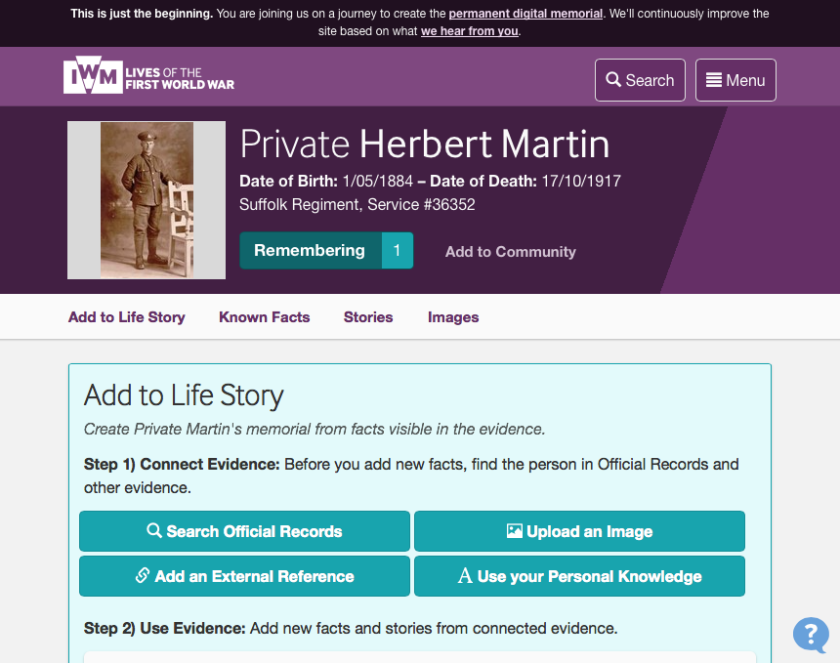Back in 2014, at the Who Do You Think You Are? Live show, I was excited to hear about a new project from the Imperial War Museum and FindMyPast.
The project, to mark the 100th anniversary of the start of The Great War, would breathe life back into all those brave men and women who served in the First World War by allowing the public to add details to their records.

This enabled those long lists of rank, surnames, and service number to start seeing information about their births, their photographs, and their life stories being added.
I have added photographs and information to several of my relatives, and one relative (a distant cousin) Frederick Vernon Cross even made it as one of the people on the home page.

This week, an email came through to announce that the project is entering the final year of the first phase, and that there is just one year left to add more valuable accompanying information, with submissions ending on 18th March 2019.
After this date, the site will become a permanent digital memorial to those brave people who served in a terrible war, for us to remember and research for the future.

I still have a few relatives to find on the site, but this reminder will set me on the path to correct that. I suggest you do the same.
Happy Researching,
Andrew




























